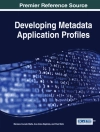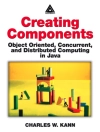This work provides an introduction to the foundations of three-dimensional c- puter vision and describes recent contributions to the ?eld, which are of methodical and application-speci?c nature. Each chapter of this work provides an extensive overview of the corresponding state of the art, into which a detailed description of new methods or evaluation results in application-speci?c systems is embedded. Geometric approaches to three-dimensional scene reconstruction (cf. Chapter 1) are primarily based on the concept of bundle adjustment, which has been developed more than 100 years ago in the domain of photogrammetry. The three-dimensional scene structure and the intrinsic and extrinsic camera parameters are determined such that the Euclidean backprojection error in the image plane is minimised, u- ally relying on a nonlinear optimisation procedure. In the ?eld of computer vision, an alternative framework based on projective geometry has emerged during the last two decades, which allows to use linear algebra techniques for three-dimensional scene reconstructionand camera calibration purposes. With special emphasis on the problems of stereo image analysis and camera calibration, these fairly different – proaches are related to each other in the presented work, and their advantages and drawbacks are stated. In this context, various state-of-the-artcamera calibration and self-calibration methods as well as recent contributions towards automated camera calibration systems are described. An overview of classical and new feature-based, correlation-based, dense, and spatio-temporal methods for establishing point c- respondences between pairs of stereo images is given.
Tabla de materias
Methods of 3D Computer Vision.- Geometric Approaches to Three-dimensional Scene Reconstruction.- Photometric Approaches to Three-dimensional Scene Reconstruction.- Real-aperture Approaches to Three-dimensional Scene Reconstruction.- Integrated Frameworks for Three-dimensional Scene Reconstruction.- Application Scenarios.- Applications to Industrial Quality Inspection.- Applications to Safe Human–Robot Interaction.- Applications to Lunar Remote Sensing.- Conclusion.
Sobre el autor
Christian Wöhler received his Diploma in Physics from Würzburg University in 1996, the Doctorate degree in Computer Science from Bonn University in 2000, and the Habilitation in Applied Computer Science from Bielefeld University in 2009. He is working as a research scientist in the Environment Perception department of Daimler Group Research and Advanced Engineering in Ulm. Since 2005 he is a visiting lecturer at the Technical Faculty of Bielefeld University. His scientific interests are in the domain of pattern classification, three-dimensional computer vision, and photogrammetry, with applications in the fields of driver assistance systems, industrial machine vision, and planetary science.’












